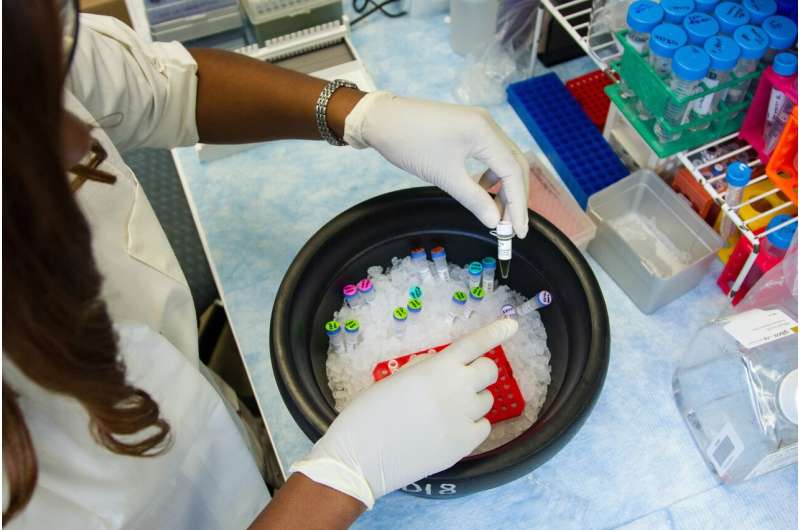This article has been reviewed according to Science X's editorial process and policies. Editors have highlighted the following attributes while ensuring the content's credibility:
fact-checked
trusted source
proofread
New community partnership model boosts inclusion of participants into HIV cure-directed research

Scientists have long used community advisory boards to engage communities and provide feedback on studies, but this model has limitations. Now, researchers from The Wistar Institute are sharing how a more inclusive model for community engagement can lead to deeper insights and greater community participation in HIV research. The community engagement group, or CEG model, is composed of a three-part structure with a community advisory board (CAB), community nonprofit organization, and researchers.
"The more inclusive community engagement group model is a valuable resource for scientists because of the broader reach, deeper trust and credibility we can maintain with persons living with HIV in our community," said Luis Montaner, D.V.M., D.Phil., vice president for scientific operations, Herbert Kean, M.D., Family Professor, director, HIV-1 Immunopathogenesis Laboratory, and leader, HIV Research Program, Vaccine & Immunotherapy Center at The Wistar Institute. "Unlike isolated advisory board models, in which researchers propose ideas and the board provides advice, the CEG model is a collaborative working unit at every stage of the research process."
As a clinic and service provider, Philadelphia FIGHT is constantly interacting with HIV patients and providers, as well as advocating for policy changes, giving it a role in the CEG that provides "a much broader footprint" than a traditional CAB, Montaner said. By combining Philadelphia FIGHT with the CAB, it also established greater access and trust within the target community.
"This a very unique, dynamic model because we are all working together," said William B. Carter, chairman of the BEAT-HIV Community Advisory Board (CAB). "We (the community) work in unison with researchers and Philadelphia FIGHT and it's a beautiful thing. In my eyes, the scientists dream up the roadmap to implement cure research with collaborators. And then the community makes the dream our own. The scientists' dreams will never come to light because they can't take that injection, they can't take that pill. You need health clinics and services to help organizations. Then you need us. I don't see how we can't succeed."
"Projects are developed in partnership," Montaner said. "As a larger working group with community nonprofit groups serving patient communities, together with community advocates sharing life experiences, the result of our joint work goes beyond just asking community members to be only advisors."
The Montaner team's case study about their experience combining scientists, Philadelphia FIGHT and a CAB under a CEG model, entitled "Community engagement group model in basic and biomedical research: lessons learned from the BEAT-HIV Delaney Collaboratory towards an HIV-1 cure," is published in Research Involvement and Engagement.
Montaner, who was senior author of the paper, said the team published the report after hearing questions from other researchers about how to replicate the Wistar CEG model. "Over time we've been asked, 'How do you do it?' he said. "Overall, we're proposing a new model for community engagement."
The paper details the decades-long relationship between HIV researchers at Wistar and Philadelphia FIGHT, a nonprofit AIDS services organization, clinic, and advocacy group. The collaboration eventually led to the establishment of the BEAT-HIV Community Engagement Group or CEG when a CAB was added as the third component.
Along with a history of the collaboration, the report also documents examples of specific projects, and lessons learned, with potential strengths and challenges faced with the CEG since its start.
"We're proposing a new, improved and more intentional model for community engagement with greater equity and roles than our previous practices," Montaner said. "We are hopeful that other research programs, not just HIV cure-directed research, can adapt our experience to increase community partnerships into ongoing research efforts."
More information: Karine Dubé et al, Community engagement group model in basic and biomedical research: lessons learned from the BEAT-HIV Delaney Collaboratory towards an HIV-1 cure, Research Involvement and Engagement (2023). DOI: 10.1186/s40900-023-00449-y



















